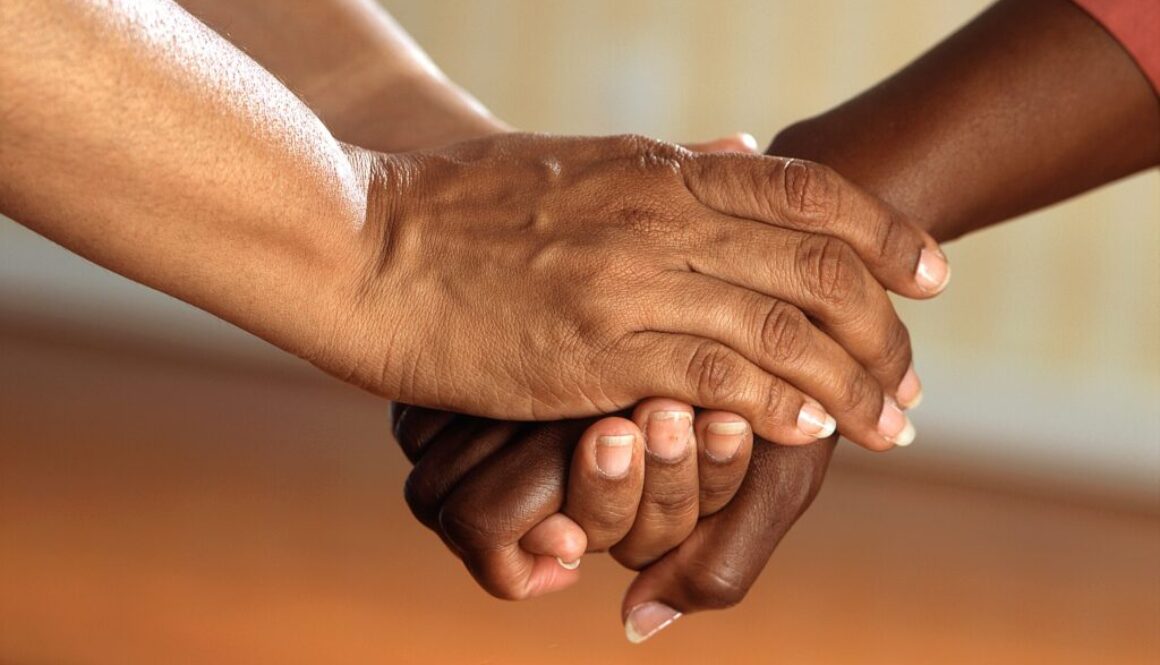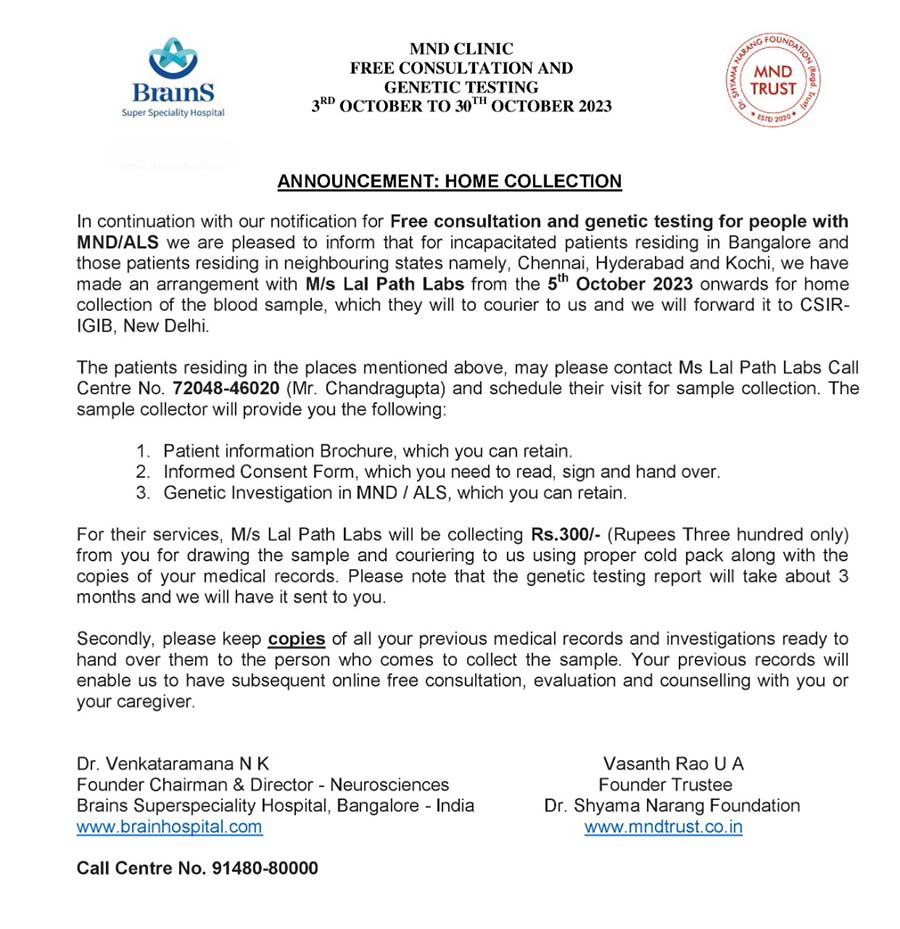Caring for a severely disabled person
It happens. One goes to the doctor with a problem, and walks out completely shaken. Our father was diagnosed with Motor Neuron Disease (MND), also called Amyotrophic Lateral Sclerosis (ALS), and a person who had had an active and productive 75 years was faced with the prospect of increasing disability. MND is a condition where there is gradual loss of muscle function, which manifests as a decrease in movement (both hands and legs), loss of speech and in due course, difficulty in breathing. There is no known cure, although there can be plateaus in the course of deterioration. The most famous patient is the physicist Stephen Hawking, whose condition has been relatively stable for decades. Having managed our father’s condition as best we could, I thought I would give a small account, to
help other care-givers in a broadly similar situation. I refer to him below as patient D. Some of the specifics refer to Delhi, where our parents lived at the time.
Hardware
Over time, D required an increasing number of devices. It started with a walker, but a tendency to fall meant hand supports were required along the walls of the home, and door handles from the local hardware store worked fine. In due course he needed the occasional and then permanent use of a wheelchair. There are two types of wheelchairs – a regular one and one for use in the bathroom. If one can have both, that is ideal. Doors may have to be taken off hinges, in order to make room for the wheel chair, and if there is even a single step accessing the house, or within it, a ramp may be required. Also, since the patient will be making many trips to see the doctor, ideally the wheelchair should have readily dismantlable wheels, and should fit into the most used vehicle. On a different note, there is a good chance of the patient falling out of a regular bed, and although this may be resisted, a hospital bed is usually required. This may or may not have the option of being
raised, but a hand cranked one is useful. If the patient becomes immobile, sooner or later an air mattress is also required, since this prevents the pressure sores that are otherwise inevitable. D used to ask for this mattress even when he was admitted to hospital, indicating that it was really much more comfortable even than the one the hospital provided. Later, D also required a Bi-pap machine to help with his breathing. Although initially we rented one, ultimately we purchased it. For D’s oxygen requirements, we rented an oxygen concentrator, but as a backup rented an oxygen tank for when there was no electricity to run the concentrator.
Attendants
Aside from a gamut of devices, there is the actual care. The patient will require an attendant, and there are social service organizations and agencies that can provide male or female nurses or trained attendants. In Delhi, VIMHANS is a good source, and most of the payment that it collects goes directly to the employee. We also used the services of Rana Nursing. We were happy with their care givers, but as a private agency, they retained a higher proportion of the charges. A trained attendant can cost about Rs. 500 per day, and a nurse up to double that. Even if the attendant claims that he can manage the situation single-handedly, it is generally not possible. Fairly soon there is need for two since (a) one does the day shift, and the other the night; (b) one compensates when the other is on leave; and (c) one trains a new-comer if the other leaves suddenly. Often, therefore, arrangements need to be made for an attendant to sleep in the house. It is also usually the case that the attendants will eat at the patient’s house, and therefore cooking arrangements have to factor this in. If the two come from different parts of the country (UP and Kerala for instance), then there is slightly more work for the cook!
One has to ensure constant communication with the patient, particularly with regard to how each attendant is treating him. This is particularly so at night, but also in the daytime. Is he getting water at night? Being helped in going to the bathroom? Responding to other requirements? The attendant is likely to go to sleep at night, and will ignore or not hear the patient’s requests for help. Ensure that the attendant sets an alarm to wake every hour or two.
Another issue relates to neatness and cleanliness. As with care for the patient, after a point, attendants may get sloppy and things that should be picked up, washed or thrown away are left lying around, making it feel like a forgotten room (and a forgotten person).
After a point, there is a tendency for the family to begin treating the attendants with kid-gloves, as if they are indispensable, both because one has become so dependent on them and because they have learnt the routine. Never, ever, feel that a given attendant is indispensable, since otherwise the quality of care will slide. One cannot stress this enough: Having the attendants can begin to give the feeling that the patient’s basic needs are taken care of, and the family can do the nice things such as play Scrabble, tell stories and so on. However the attendants need constant oversight. Illustratively, they may start treating the patient with condescension. D was the last person to complain, but even he was forced to complain when an attendant – amongst other things – told him that his problems were in his head. We dismissed the attendant immediately.
Communication
For summoning help, while he still had mobility in at least one hand, D could press a call bell. Later, we installed a baby monitor in his room. Thus, if he made any sound at all, it was audible in whichever room the receiver was placed. In terms of more complicated messages, there were challenges. Over time, as his hands ‘clawed’, D could no longer write or use a mouse. His words became slurred and in due course he lost his speech completely. We were forced to improvise, and describe below a small and simple device that a bunch of family members cooked up. (1) We looked up sites dealing with ALS, and saw a device that basically seemed
to be a laser pointer. (2) We therefore set about creating a laser pointer on a headband that D could use to point at letters. (3) Since the button on most laser pointers needs to be pressed to be kept on, we went to a toy shop and discovered a small laser pointer that was part of a toy gun, but was detachable, and that was light and could be switched on. Over time we had to buy 3 of them, since sometimes they stopped working. We also identified someone who could repair them. (4) A velcro headband was created, to which the laser pointer could be attached. (5) An A4 sized paper was created that had the alphabet and 0-9, in boxes. Two copies were printed out and laminated. (6) When the velcro was found to be too floppy and taking too long to adjust, it was anchored to a ‘crown’ made of chart paper. Later the assistant changed the support to an orthopedic collar. (7) Ideally one should have multiple pointers with the same battery requirements. (8) Generally, a book stand was used to prop up the alphabet sheet. Although care givers would usually have a pen and paper at the ready, they soon became very adept at picking up what was being said, and every word did not have to be spelled out completely. The ‘Laser’ went with D on every hospital trip, and extended his communication for over a year. Even when his neck muscles weakened and he could no longer raise his head, if he was propped up in the hospital bed, he could communicate using the laser. Although the family of another ALS patient had told us that ultimately the patient was communicating only through his eyes, D never reached that point.
Running the household
If, as in our case, the patient is elderly, the patient’s wife is equally elderly. Joking about death is all very well, until a diagnosis brings it closer. The patient’s situation is very distressing, and the uncertainty of the future weighs on her mind. This is aside from having to adjust to strangers in the house and the various demands of the situation. Just as much attention needs to be paid to the spouse and her health (including mental health), and the running of the household, as to the patient. Family and friends are often willing to help: do not hesitate to ask for it. As it turned out, with increasing disability D himself did not want visitors, and our mother also preferred it that way. In general, therefore, care-giving devolved to an ‘inner’ core comprising 2-3 family members who shouldered most of the burden, and an ‘outer’ core that comprised 5-10 family members and very close friends. Bringing in particular supplies, providing the car and driver, coming over to chat with the patient or others, taking the patient to the hospital (which can never be left to the attendants), being on call at certain times – there are a large number of things that need doing, sometimes for several years. If individuals come from out of town for even a few days, and are helping to run the house, they need to know phone numbers (of other family and friends, chemists, doctors, ambulances, plumber, electrician, grocery shop and so on) and medicine and other care schedules. Keep print outs, and update them periodically. And in case particular family members are coming from out of town regularly, there needs to be an organized way of passing the baton. A to-do list should be awaiting them when they arrive, and a to-do list should be left behind when they leave.
Others
What were the other things that helped the situation? I mention a handful here.
1. D was the last person to be put down by adversity, and his – largely – good spirits kept the house cheerful through most of his illness. His group of care givers were equally good at bantering with him or learning enough Scrabble to even beat him. It is essential that all who come in contact with the patient treat him as a normal person, while allowing for the restrictions imposed by the illness.
2. D had never watched TV before his illness, and consistently refused offers of a TV or DVD player during this period. A cousin loaned us an iPod and another cousin downloaded a whole bunch of classics that were available as free audio books on the net. Although D initially refused these too, a time came when he could not comfortably read a book, and he became an avid fan of the audio books.
3. There will be many trips to the hospital, so ideally a regular car and driver need to be available. The car needs to have doors that open wide enough to allow space for two people to help get the patient in and out, and a roof high enough that there is clearance for this process to happen smoothly. If possible work out one hospital as the ‘go to’ hospital, so that the doctors and nurses in the emergency room become familiar with the patient’s issues and needs. One has to choose this hospital with care, since expenses mount over time and some hospitals’ fees are rapacious. Ideally the hospital should also be fairly close by.
Finances
As is clear from the above, such diseases are expensive, but we were fortunate enough to be able to afford all that was required. From early on, the inner core group kept track of all expenditure in an excel file. Each person’s contributions, as a percentage, was decided upfront, and then reasonably accurate records were kept. As others made payments for various things, they were reimbursed. Although finances are often a source of friction, even amongst the very wealthy, we did not face any problem on this score. Aside from the particulars of care, I wish to make a general point. Discussions of healthcare costs often revolve around the price of drugs. As the number of elderly, in particular, increases, many families will face situations such as the above, where the cost of drugs is a very small fraction of the overall expense. I hope that the account above is useful to anyone concerned with enabling affordable healthcare in the country.
| Some of the devices that a patient may need, where the items may be procured from and the approximate price. | |||
| Item | Available from | Approximate price, in Rs. | |
| 1. | Walker | Chemist | 1,500/- |
| 2. | Regular wheelchair | Medical supplies’ shop or specialist centres such as the Indian Spinal Injuries Centre (ISIC) in Vasant Kunj | 15,000/- onwards |
| 3. | Bathroom wheelchair | Same as above | 5,000/- |
| 4. | Hospital bed | Medical supplies’ shop | 14,000/- |
| 5. | Air mattress | Chemist | 5,000/- |
| 6. | Bi-pap machine | Ask a doctor or chemist for a supplier. | 10,000/month (for rent) 70,000/- (for purchase) |
| 7. | Oxygen concentrator | Same as above | 6,500/month (for rent) |
| 8. | Oxygen cylinder | Same as above | 9,000/- to start with; 250/- for monthly cylinder rental; 500/- for cylinder refill. |
| 9. | Call bell | Stationery shop | 100/- |
| 10. | Baby monitor | Baby products’ shops | 3,000/- |


 Dr. Alexander Thomas | President, AHPI
Dr. Alexander Thomas | President, AHPI
